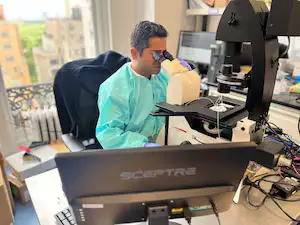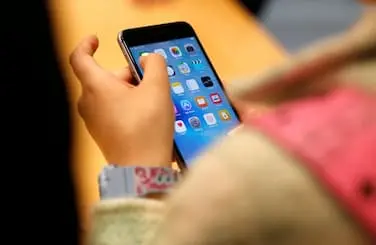AI Revolutionizes Male Infertility Diagnosis by Finding Viable Sperm in Hours
Scientists have developed an AI system capable of identifying viable sperm in severely infertile men within hours—a breakthrough that could significantly shorten diagnosis times and increase success rates in fertility treatments.
In a breakthrough that could redefine male fertility diagnostics, researchers have unveiled an artificial intelligence tool that can locate viable sperm in infertile men in just hours — a process that previously took clinicians several painstaking days of manual analysis. This leap forward in reproductive technology offers new hope to thousands of men previously told that fathering a biological child might be impossible. The research, conducted by scientists at the Weizmann Institute of Science in Israel and published in *Science Translational Medicine*, demonstrates how machine learning and high-resolution imaging can accelerate the detection of healthy sperm, even in cases of non-obstructive azoospermia (NOA) — one of the most severe forms of male infertility.
### What Is Non-Obstructive Azoospermia?
Non-obstructive azoospermia affects around 1% of all men and up to 15% of those with fertility issues. It refers to a condition where no sperm is found in a man’s ejaculate due to problems in sperm production within the testes. Men with NOA often undergo a surgical procedure known as microdissection testicular sperm extraction (micro-TESE).
During this delicate surgery, urologists extract tiny pieces of testicular tissue and search for viable sperm — a process that involves manually examining thousands of cells under a microscope. The effort can take multiple days and may not always succeed. “Finding even a single viable sperm can mean the difference between fatherhood and infertility,” said Dr.
Nitzan Gonen, one of the lead authors of the study. “But it’s like searching for a needle in a haystack — except the haystack is made of cells, and the needle looks almost exactly like the hay. ”
### AI to the Rescue
To solve this problem, researchers trained a neural network on thousands of microscopic images of testicular biopsies.
The AI learned to identify subtle visual features that distinguish healthy sperm cells from the surrounding tissue and other cell types. It was then tested on new samples — and the results were groundbreaking. The AI system found viable sperm in less than six hours, with an accuracy rate of more than 90%.
In some cases, it identified sperm that human embryologists had missed. “The machine doesn’t get tired, and it doesn’t get distracted,” said Dr. Leeat Keren, a senior computational biologist on the project.
“It just keeps scanning at high speed with perfect consistency. ”
This is not the first time AI has entered the reproductive health space, but it’s the first technology that offers a tangible solution for diagnosing sperm-related infertility with such speed and reliability. ### A Game-Changer for IVF
Artificial reproductive technologies (ART), including in vitro fertilization (IVF) and intracytoplasmic sperm injection (ICSI), rely on the ability to obtain at least one healthy sperm.
For men with NOA, that’s often the greatest hurdle. This AI technology could dramatically increase the odds of successful retrieval. “Before, patients might have to undergo multiple procedures or face heartbreaking outcomes,” said Dr.
Karen Levi, a fertility specialist unaffiliated with the study. “This changes that timeline. If sperm can be found more quickly and with greater certainty, we can plan IVF cycles more effectively and reduce emotional and financial stress for couples.
”
In addition, AI-based sperm detection could decrease the workload for embryologists and reduce human error — a critical factor when dealing with samples that may contain only one or two viable cells. ### Behind the Tech: How It Works
The researchers used a deep learning model called a convolutional neural network (CNN) — a system particularly well-suited to image recognition. They trained the model on labeled images of known sperm and non-sperm cells, then validated it with biopsy samples from over 30 patients.
The system not only highlighted potential sperm cells but also provided confidence scores for each detection, allowing embryologists to prioritize which samples to examine under higher magnification. To further improve efficiency, the team used fluorescent staining and high-resolution microscopy to feed the AI clearer visual inputs — although the technology is being adapted to work with more standard imaging systems used in IVF clinics worldwide. ### Patient Stories: From Hopeless to Hopeful
One of the study’s participants, 39-year-old Eitan Gold, had been diagnosed with NOA and told that his chances of fathering a child were minimal.
After undergoing the AI-assisted biopsy, viable sperm were located within four hours — a task that would typically have taken embryologists more than a day. “When we got the call saying they found sperm, we both cried,” said his wife, Yael. “We’d been trying for five years.
We thought it was over. ”
Eitan is now the father of a healthy baby boy, conceived via ICSI. “AI didn’t just help find a cell,” he said.
“It gave us a family. ”
### Limitations and Future Directions
While the results are promising, the technology is not yet available in most fertility clinics. The team is currently working with medical device companies to commercialize the system and obtain regulatory approval.
There are also some caveats. The AI doesn’t eliminate the need for surgical extraction — it still requires a micro-TESE to retrieve the tissue. Additionally, while the model has proven highly accurate, false positives (misidentifying non-sperm cells) and false negatives (missing rare sperm cells) remain a concern, especially in very low-quality samples.
Still, researchers are confident that with larger datasets and continued training, the AI will continue to improve. They’re also exploring applications beyond infertility, including cancer-related sperm banking and tissue analysis in adolescent oncology patients. ### Ethical Considerations
As with any AI-based medical tool, the use of automation in fertility raises ethical questions.
Should patients be informed if AI finds sperm that a human missed? Who is responsible for false detections? And how do we balance machine efficiency with the emotional complexity of infertility?
Dr. Gonen acknowledges these concerns. “We’re not trying to replace human expertise,” she said.
“We’re trying to enhance it — to give embryologists a better lens, not take away their judgment. ”
Patient consent and transparency will be critical, researchers say, particularly as AI tools move from research labs into clinical practice. ### A Broader Impact on Men’s Health
Beyond the immediate fertility benefits, the technology could also serve as a diagnostic tool for testicular function and broader reproductive health.
By mapping the presence and distribution of sperm and precursor cells, the AI may help uncover causes of infertility that were previously unexplained. Male infertility — often under-discussed — affects nearly 1 in 7 couples globally. Experts hope that breakthroughs like this will spur more investment, awareness, and empathy.
“Too often, the burden of infertility falls solely on women,” said Dr. Levi. “This AI reminds us that male reproductive health is just as vital and just as complex.
”
### Conclusion
The development of an AI system capable of detecting viable sperm in infertile men within hours represents a powerful intersection of technology and human hope. While challenges remain, the promise is clear: faster diagnoses, more efficient fertility treatments, and new possibilities for families around the world. In the years to come, as the system becomes more widely adopted and refined, it could fundamentally change how infertility is diagnosed and treated — not just as a medical condition, but as a deeply human journey of resilience, science, and love.




